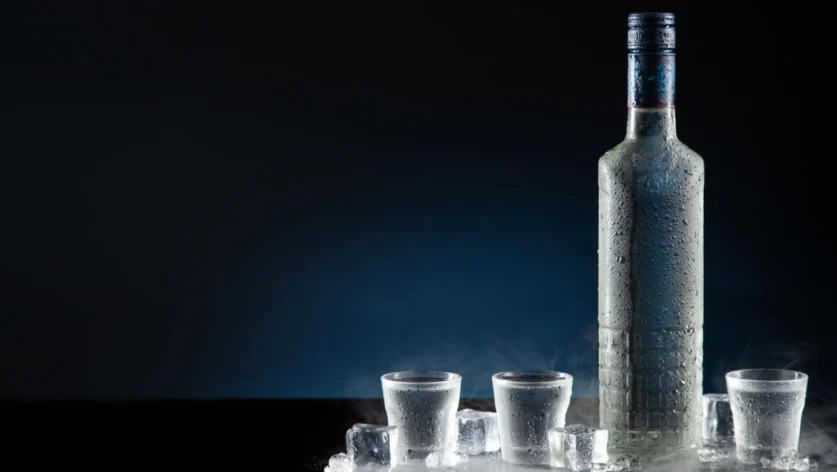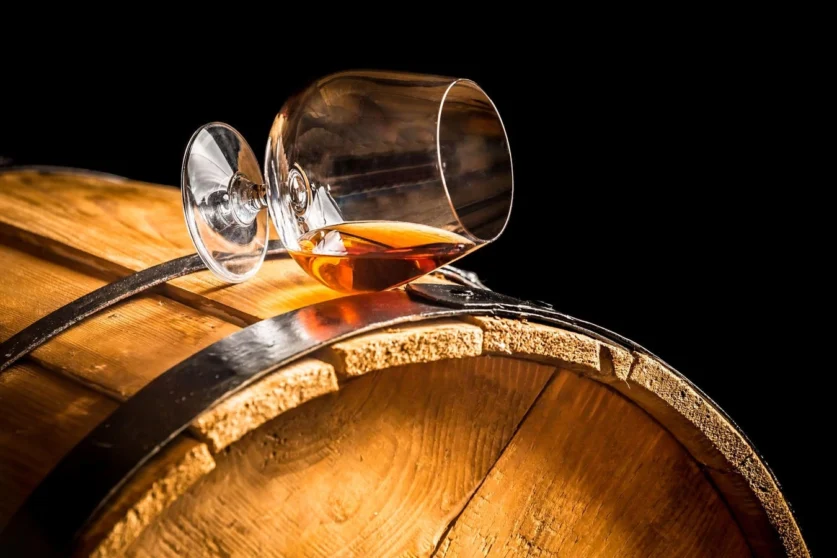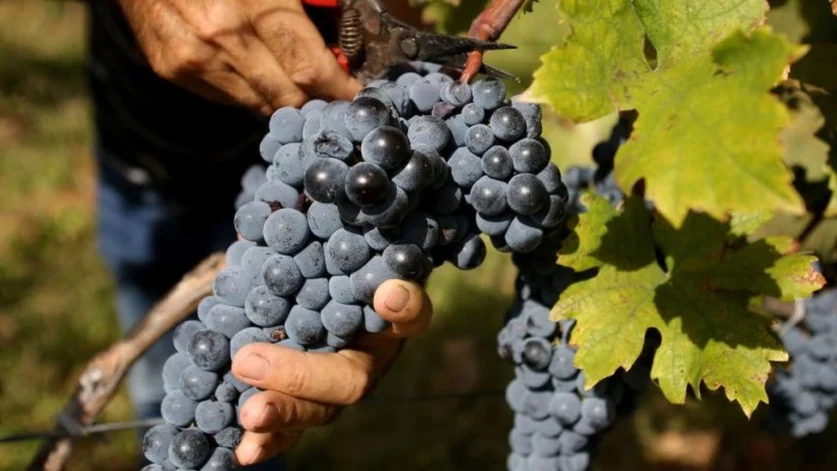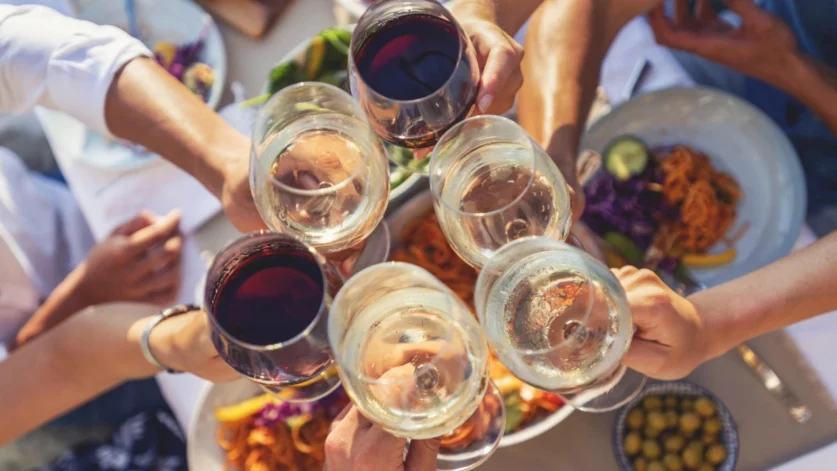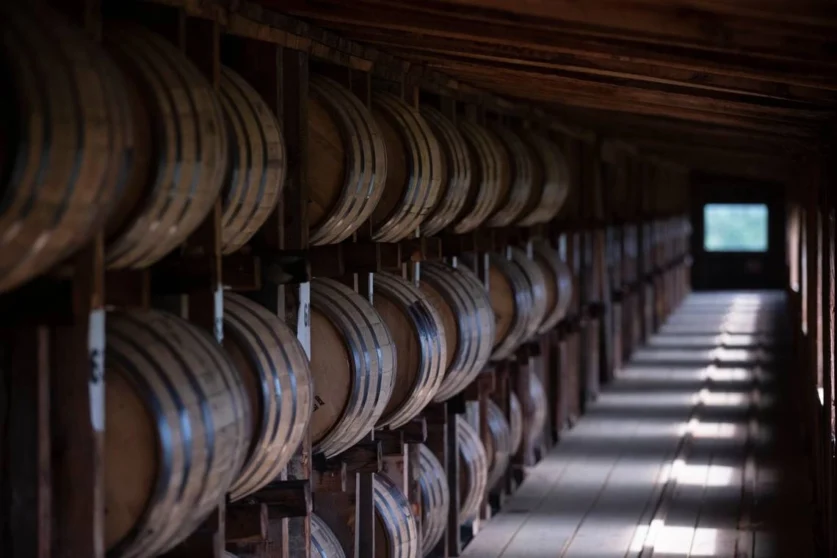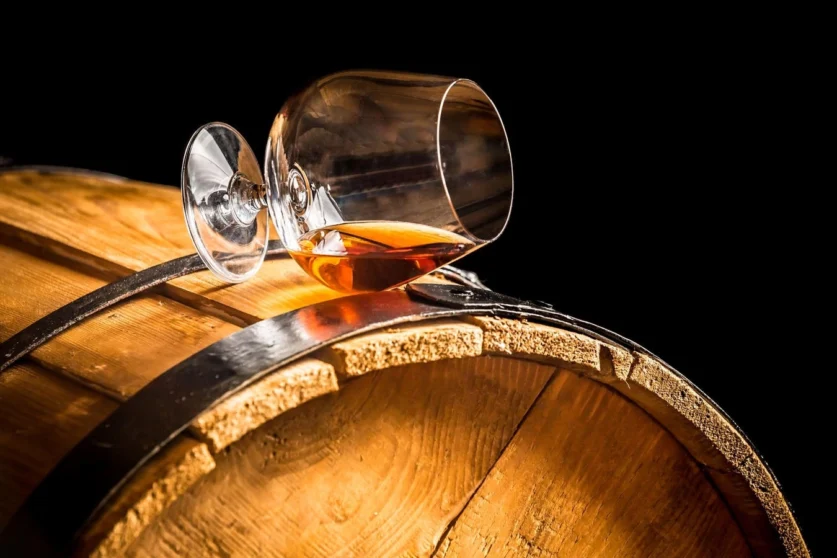Warning: Attempt to read property "taxonomy" on bool in /home/icoholco/public_html/wp-content/themes/Grimag/archive.php on line 187
Unveiling the World’s Best Whiskey: Insights from the 2023 ‘Drinks International’ Top 50 List
Michter’s Distillery is named “World’s Most Admired Whiskey” by Drinks International, becoming the first American brand to receive the prestigious honor.
Throughout the lion’s share of the 21st century, Michter’s has enjoyed its status as one of the premier names in American whiskey. But now, the Kentucky-based distillery can lay claim to a new title: king of the global whiskey-making game. This week, it was named “World’s Most Admired Whiskey” in the annual list of top 50 producers published by Drinks International.
Now in its third edition, the yearly ranking is formed by surveying a consortium of “independent whisky experts from across the globe,” according to the magazine’s website. Those industry veterans are asked to evaluate brands by way of a number of key metrics, including quality and consistency, price-to-quality ratio and strength of marketing.
Using that rubric, Michter’s bested the field—which was something of a coup, as this was the first time that an American distillery had received the top prize. Indeed, in hauling home the hardware, Michter’s beat out Yamazaki—the pride of Japan—and Ardbeg, a perennial darling among scotch enthusiasts.
“For decades, American distillers have been working hard to produce outstanding whiskeys,” stated Michter’s president Joe Magliocco, following the announcement. “To finally see this international recognition for a whiskey made in the U.S. is absolutely wonderful.”
It’s been an unpredictable journey for Magliocco and his team. In the late ‘90s, he procured the trademark to the Michter’s name for merely $245. The distillery, which was defunct at the time, had a legacy dating back to pre-Revolutionary War Pennsylvania. He then promptly established his business in Shively, Kentucky, and engaged top talent from the bourbon industry to assist with the production. Fast forwarding to 2020, the brand was already breaking world records with the sale of a single barrel for over $200,000 (it was a 10-year-old bourbon that was auctioned off for a Covid-related charity).
Setting high records is not a rarity for Michter’s. In 2013, it unveiled its Celebration Sour Mash. This exclusive blend of ultra-aged bourbon and rye was priced at $4,000 a bottle, marking it the costliest American whiskey release of that time. The label’s fourth edition was released earlier this year, with a mere 328 bottles priced at a soaring $6,000 per decanter. However, finding one at half this price today would be a stroke of luck.
Even so, the distillery wouldn’t have garnered this recent recognition had it solely marketed top-shelf products. In its U.S. 1 lineup of bourbon and rye, the brand consistently produces a tastefully delightful small batch bourbon, which is aged for more than 8 years and priced affordably within the $40-$50 range.
Despite the relatively slow progress of American whiskey within European markets, Michter’s stands as a notable outlier. The esteemed London, Paris, and Berlin bars frequently feature its 10-year-old bourbon and rye, dripping in a signature wax seal. The brand considers their recognition to be a significant moment that may potentially forecast future success for the broader category, reminiscent of the infamous “Judgment of Paris.”
“The implications of this award for both Michter’s and the broader American whiskey community fill me with immense pride,” expresses Andrea Wilson, Michter’s Master of Maturation. “Though we’ve long believed in our methods domestically, it’s a common sight to witness bourbon automatically relegated to the lower shelves when traveling internationally. So, to witness it finally achieving such lauded recognition is beyond thrilling.”
The international community may now finally give the term “whiskey” the respect it deserves.
Click here to view the complete list of most admired whiskey producers.
Michter’s has made a major inroad for American whiskey on the global scene.
Why Tulip Vodka Should Be On Your Must-Try List
Many of us know that vodka can be made from various grains like potatoes, corn, rice, rye, and wheat, but did you know it can be made from fermented tulip bulbs? In 2017, the Netherlands distillery Clucius Craft Distillers released its handcrafted Dutch Tulip Vodka, a premium vodka made from tulips grown in the clay soil near the Dutch coastal dunes. The distillery currently produces two varieties of tulip vodka. Clucius Tulip Vodka is handmade from a combination of tulip bulbs and other grains and described by the makers as “a pristine and smooth vodka with gentle mineral tones, fresh floral aromas, and a subtle nutty twist.” This bottle runs about $40 and can be mixed in a cocktail or served straight.
Clucius Tulip Spirit Prestige is the premium counterpart, is made entirely of tulip bulbs (containing about 350 bulbs per bottle), and is limited in production. This exclusive vodka will cost you about $370. Both of the Clucius vodkas have an ABV of 40%. To buy the elusive bottles in-store, you may have to travel to the Netherlands since both bottles are not easy to find in the U.S. and are primarily sold in local Dutch stores. However, you may be able to have it shipped to you from online marketplaces like Cask Cartel Premium Spirits, although at a much heftier price tag.
Read more: The Ultimate Vodka Brands, Ranked
The Dutch are proud of their tulips, and they have good reason to be. There is a rich history of tulips in the Netherlands, and cities like Amsterdam and Holland are home to some of the most extensive and exquisite tulip gardens in the world. Clucius Craft Distillers is named after 16th-century Dutch botanist and gardener Carolus Clusius, who was largely responsible for introducing tulips to the Netherlands. The private craft distillery has a patent-pending production process that involves fermenting 100 percent Dutch tulip bulbs by hand and using water that the Dutch sand dunes have purified.
After testing various methods, innovators Joris Putman and Bart Boucher, his cousin, discovered a method to distill tulip bulbs, a process that is known to be quite complicated. Their distillery currently utilises thousands of tulip bulbs each day for its vodka manufacturing procedure, one which results in absolutely no waste. The leftover tulip bulb components are fed to the cattle by a nearby farmer while the water is recycled.
The water employed for producing Clucius vodka is remarkable due to its exclusive sourcing and high grade. According to the makers, the water is globally recognised for its clear taste, purity, and quality.
Those who are not familiar with the vodka manufacturing process should know that vodka is composed of roughly 60% water, with the remaining 40% being ethanol derived from fermenting fruit, grains, vegetables, or in this case, tulip bulbs. Bar professional and “Vodka Distilled” author Tony Abou-Ganim states that, “Water has a profound influence on the final product’s character and adds to the texture and mouthfeel.”
Therefore, it might be assumed that vodka made with water naturally filtered through Dutch sand dunes could possess a superior taste compared to vodka made with ordinary tap water. If you get a chance to taste this rare, top-of-the-line spirit, you can discern for yourself whether the floral notes are evident in the vodka and if the water truly enhances the flavour.
Read the original article on Daily Meal.
Unveiling the World’s Best Rum: Highlights from the 2023 Caribbean Rum Awards
Puerto Rico’s Don Q Reserva de la Familia Serralles nabbed the top spot at the most important event of the rum realm.
Annually, the rum industry holds a gathering in the Caribbean to commemorate both molasses-based spirits and premium rhums agricoles during Caribbean rum week. The week culminates in the sixth annual Caribbean Rum Awards where the best bottles and producers of the year are recognized.
The best bottle of 2023 award was presented to Don Q Reserva de la Familia Serralles. This unique bottle was first created in 1994 when the Serralles family stored a special rum in charred American white oak barrels. The finest samples from the 36 barrels were selected to produce this exceptional batch.
Other notable mentions include Neisson Zwetol (gold), which derives its name from the Creole word for star and comes in Jura wood packaging; Mount Gay Single Estate (silver), which is made from sugar cane harvested from specific fields, and Papa’s Pilar Ernest (bronze), a tribute to Ernest Hemingway in liquid form.
The Caribbean Rum Awards St Barth was an outstanding success this year,” according to the publication’s editor and publisher, Alexander Britell. “The remarkable range of Caribbean rums showcased their astonishing quality and diverse flavors.”
The week-long fest was chock-full with parties, tastings, masterclasses and pairing dinners throughout St Baths island, culminating with the final competition at the Rosewood Le Guanahani St Barth resort.
Rhum Neisson from Martinique emerged as the most lavishly awarded brand, bagging double gold in three classes. Island Company Rum from Trinidad was recognized as the Best Gold Rum, while Flor de Cana seized the accolade for best branding. Rum maker of the year went to Yves Assier de Pompignan from Martinique.
Elevating from the traditional format, a fresh category, cane rum, was introduced into the competition by the Caribbean Rum Awards, focusing on rums produced from cane juice. The first-place honor under the fresh category went to Renegade Rum Single Farm Origin Dunfermline from Grenada, receiving double gold.
“The Caribbean rum realm is more intriguing than ever, with rhum agricole at the core of the excitement,” affirmed Guy Britton, the main overseer at Caribbean Journal.
Regarding the Rhum Blanc Guadalupe category: The accolade of double gold was conferred upon Rhum Karukera 50, gold was bestowed on Reimonenq Coeur de Chauffe, Rhum St Barth 50 was honoured with silver, and Damoiseau 69 was awarded the bronze.
In the domain of Rhum Blanc Martinique, Rhum A1710 La Perle clinched double gold, Neisson Dekolaj secured gold, Baie de Tresor grabbed silver, and Rhum JM 50 took home bronze. Moving to Vieux Agricole, Rhum Neisson Vieux Bio bagged double gold, Rhum Karukera L’insolite procured gold, Longueteau Vieux claimed silver, and Damoiseau Vieux achieved the bronze.
“We witnessed some top-notch rums and emerging distilleries showcasing their rums, besides the enduring support from our agricole producers,” remarked Christopher Davis, the architect of Rhum Room St Barth, and joint founder of the Caribbean Rum Awards St Barth. “The week was rewarding, and we have some thrilling plans for 2024.”
Among the panel of judges were Alexander Britell, the co-founder of the Caribbean Rum Awards and the editor and publisher of the Caribbean Journal, Guy Britton, the managing editor of Caribbean Journal, and rum connoisseur Christopher Davis, who is also the founder of the Rhum Room St Barth. Others on the panel were Peter Berntsen, the COO of Empire Social Lounge in Miami, Myssi Davis, the founder of Rum Traveler, and Jose Antonio Hernandez-Solaun, the president of the International Wine and Food Association’s branch in Miami. Also, rum specialist Ivan Jivkov, Simons Chase, the editor of Cuba Journal, and globally celebrated Chef Guy Ferdinand were included.
Unlocking the Flavor: How to Effortlessly Add Beer to Any Dish with this Freezing Hack
Beer is a delicious and adaptable ingredient in cooking, although it can be challenging to use. For instance, if a recipe requires a small quantity of beer, it might not justify opening a full bottle, particularly if you don’t fancy a drink. In such an instance, a simple ice tray can be your solution, allowing you to freeze the ideal amount of beer. All you need to do is fill each slot with your preferred beer and then freeze it. When needed, simply take out the required number of cubes and include them in your dish.
Beer is a fantastic addition to various recipes. It can give a fish or chicken batter a rich, savory flavor, while also adding a touch of brightness and acidity to soups and stews. Dark beers can also add an extra layer of flavor to rich, chocolatey baked goods. You may be questioning why you can’t just freeze a bunch of bottles or cans for future use, and the answer is quite dramatic.
Read more: 10 Of The Healthiest Beers You Can Drink
Storing beer in your freezer might lead to a huge mess and leave you without any beer for your culinary endeavors. The water in the beer expands as it freezes, posing a significant problem with cans. As the water has no place to expand, it could burst through the metal and spill all over the freezer. Bottles face the same dilemma, with the risk of the stopper popping off or even the glass breaking.
Adding brews to ice cube trays is clearly the better option, as you won’t need to worry about busted cans and broken glass and lids. The only potential downside is that freezing beer causes it to lose its bubbles, which will pose an issue with certain recipes. For instance, the carbonation in beer is key to making airy beer bread, so you may want to use a fresh can or bottle in place of frozen for those recipes. Otherwise, you can easily make beer cubes in your freezer with just a few simple steps.
When beer has an alcohol by volume percentage somewhere between 4% and 6%, it will most likely freeze at 28 degrees Fahrenheit. Fortunately, most home freezers are set to 0 degrees Fahrenheit, which means you should have no issue creating your beer cubes.
When choosing an ice cube tray to store your beer, keep in mind that most standard trays hold between ½ and 1 fluid ounce, so you may want to get a couple if you plan on making an abundance of cubes. You can also try making larger square beer cubes that hold four times the volume. When pouring, slow and steady is your best bet. If you slosh the beer into the trays too quickly, the cubes could foam up. Once they’re filled evenly, it will take about six hours for them to fully freeze before you can remove them. You can also leave the cubes in the freezer overnight, but consider covering them if you plan on keeping them in there for an extended period so that they’re less exposed to air and any circulating odors. With these tips, you can enjoy easy access to beer to boost your cooking.
Read the original article on Daily Meal.
“2023 Sees Global Wine Production Hit a 62-Year Low”
Global wine production is anticipated to drop to a low not seen in six decades due to adverse weather conditions worldwide.
The International Organisation of Vine and Wine (OIV) predicts a 7% decrease in worldwide wine production for 2023 compared to the previous year.
This production level would mark the lowest yield since the year 1961.
The OIV attributes this significant drop in production to adverse weather conditions such as frost, heavy rainfall, and drought.
“A perfect storm in the north and south hemispheres has created this catastrophic situation,” the OIV’s head of statistics, Giorgio Delgrosso, told the BBC.
The analysis is based on information from countries representing 94% of the global production of the ancient beverage.
Wine production was down in almost every country of the European Union, which produces over 60% of the world’s total. According to the OIV, lower yields are due to rains and storms in some countries and droughts in others.
Yields were down 14% in Spain and 12% in Italy, where dry weather reduced this year’s harvest of grapes.
Even in France, it remained perfectly so, which now makes the country the largest producer in the world, surpassing Italy.
The scenario was likewise grim in other world regions, with nations in the southern hemisphere being particularly impacted.
In Chile, the top wine producer in the southern hemisphere, producers encountered a shock with a decrease in yields by 20% due to droughts and wildfires. The harvest in Australia was just as bleak, with a decline in production by a quarter compared to the previous year.
On the other hand, the US saw a brighter situation, with a production increase of 12% compared to 2022.
There may be some good news for wine lovers.
Despite the fact that subpar global production is detrimental to the industry as a whole, falling global demand could possibly result in the overall market maintaining a balanced state, hence averting a fall in prices, according to the OIV.
“Since the economic growth in China started showing signs of slowing down post 2018, a significant decrease in both wine consumption and imports has been observed”, stated Mr Delgrosso.
“While low production is a concerning issue, the price balance could be potentially achieved through reduced consumption rates,” he added.
In August, the French government announced that it would allocate some €200m (£171.6m) to destroy surplus wine stocks as the industry struggled to adapt to falling demand.
“Discover the Freezing Hack: An Easy Guide to Infuse Your Dishes with Beer”
Beer is a flavorsome and versatile ingredient for cooking, however, merging it in recipes is easier said than done. For instance, a tiny part of beer required in a recipe might not validate opening a complete bottle if you’re not desiring an alcoholic drink. In this circumstance, a simple ice tray can come in handy to freeze the ideal serving of beer. All it needs is to fill each slot with a portion of your preferred brew and put it in the freezer. Whenever needed, as many cubes can be fetched and added to your cooking.
Beer is a wonderful ingredient for different types of recipes. It provides a rich, savory taste to the batter for fish or chicken, and adds a hint of brightness and acidity to soups and stews. Dark beers can even be utilized to enhance baked goods featuring rich chocolate. You might have a question about why you can’t just put a few bottles or cans into the freezer to conserve beer for recipes, and the answer is quite explosive.
Read more: 10 Of The Healthiest Beers You Can Drink
Preserving beer in your freezer might result in a massive mess and leave you with no brews for your cooking. The water in beer expands as it freezes, posing a significant risk with cans. The ever-expanding water will have no place to escape, thus likely causing the metal to burst and spill all over the freezer. Bottles display the same problem, implying that the cap could potentially pop off or the glass could break.
Adding brews to ice cube trays is clearly the better option, as you won’t need to worry about busted cans and broken glass and lids. The only potential downside is that freezing beer causes it to lose its bubbles, which will pose an issue with certain recipes. For instance, the carbonation in beer is key to making airy beer bread, so you may want to use a fresh can or bottle in place of frozen for those recipes. Otherwise, you can easily make beer cubes in your freezer with just a few simple steps.
When beer has an alcohol by volume percentage somewhere between 4% and 6%, it will most likely freeze at 28 degrees Fahrenheit. Fortunately, most home freezers are set to 0 degrees Fahrenheit, which means you should have no issue creating your beer cubes.
When choosing an ice cube tray to store your beer, keep in mind that most standard trays hold between ½ and 1 fluid ounce, so you may want to get a couple if you plan on making an abundance of cubes. You can also try making larger square beer cubes that hold four times the volume. When pouring, slow and steady is your best bet. If you slosh the beer into the trays too quickly, the cubes could foam up. Once they’re filled evenly, it will take about six hours for them to fully freeze before you can remove them. You can also leave the cubes in the freezer overnight, but consider covering them if you plan on keeping them in there for an extended period so that they’re less exposed to air and any circulating odors. With these tips, you can enjoy easy access to beer to boost your cooking.
Read the original article on Daily Meal.
The temperature of food is equally important as the flavor when it comes to pairing wine.
Steak and Cabernet Sauvignon: A Match Made in Food Heaven
When it comes to pairing wine with your meal, there is one factor that often goes unnoticed – the temperature of your food. As Ramon Manglano, Wine Director of The Musket Room, a renowned Michelin-starred restaurant in New York City, explains, the temperature of your dish can greatly influence the pairing.
Manglano emphasizes the preference for white wine when enjoying cold dishes such as salads, sandwiches, cheese, gazpacho, and sushi. The reason for this is that coldness tends to dull flavors, making it crucial to choose a wine that complements the dish’s ingredients rather than overpowering them. For a refreshing seafood salad, a Chardonnay or Sauvignon Blanc with its lively acidity can be the perfect choice to balance out the mildness of the food.
However, Manglano suggests combining cold dishes with a side dish that isn’t as cold, as it can level out the temperature and create a harmonious pairing. For example, sautéed, well-seasoned vegetables can provide a delightful contrast to smoked salmon.
This philosophy of pairing wines based on temperature is equally important when it comes to warm or hot dishes. If you’re savoring a hearty beef stew or a succulent roasted lamb, the ideal choice would be a full-bodied red wine like a Cabernet Sauvignon or a Merlot. The depth of the wine enhances the richness of the dish, creating a truly indulgent experience.
The temperature of the wine itself also plays a vital role in the overall pairing. As a general rule, white wine should be served chilled, between 49 and 55 degrees Fahrenheit, while red wine is best enjoyed slightly warm, between 62 and 68 degrees Fahrenheit. This is because the natural notes and aromas of the wine are more perceptible when sipped at the correct temperature.
However, it’s important not to make the wine too cold, as it can mute its subtleties, and letting it get too warm can make it taste overly alcoholic. Striking the right balance between the temperature of your food and wine can significantly enhance your dining experience.
In conclusion, the temperature of your food plays a crucial role in pairing it with the perfect wine. Whether it’s a refreshing Chardonnay with a cold seafood salad or a full-bodied Cabernet Sauvignon with a hearty beef stew, understanding the importance of temperature can help you create a harmonious balance between what’s on your plate and what’s in your wine glass.
References:
– Mashed: [Link to the original article](url)
In Kentucky, what is the amount of bourbon produced? Could you explain the distinction between bourbon and whiskey?
Confused about Kentucky bourbon? A lot of people are. LexGoDrink is here to help, with bourbon news, distillery updates, and more. But let’s approach this topic from a different angle. Instead of giving you a straightforward explanation, let’s play a little game of trivia. Ready? Here’s a question that often leaves bourbon enthusiasts scratching their heads: “What’s the difference between bourbon and whiskey?”
Now, before you jump to any conclusions, let me tell you this – all bourbon is whiskey, but not all whiskey is bourbon. Confused? Don’t worry, I’ll break it down for you. In order for a spirit to be classified as bourbon, it must meet a few specific criteria. First, it needs to be made with at least 51% corn. Yes, corn, the golden grain that gives bourbon its distinct sweetness. This requirement sets it apart from other whiskies that may be made with different grains like barley or rye.
But that’s not all. Bourbon must also be aged in new charred oak barrels. This aging process gives the spirit its rich flavors and adds character to the final product. The longer it ages, the more complex and smooth the bourbon becomes. It’s like a fine wine, getting better with time.
Now, let’s talk about proof. To be considered bourbon, the spirit cannot exceed 80% alcohol by volume or 160 proof. Additionally, it must go into the barrel at no more than 125 proof. This ensures that the bourbon doesn’t lose its distinct flavors during the aging process. It’s all about finding that perfect balance.
Finally, we come to the bottling stage. Bourbon must be bottled at 80 proof or higher. This ensures that the flavors and aromas remain intact, even after it leaves the barrel and makes its way to your glass. So, the next time you’re at a bar and see a bottle of bourbon with a proof higher than 80, you’ll know it’s the real deal.
Now that we’ve covered the basics, let’s dive into the heart of the matter. Just how much bourbon is actually made in Kentucky? And how many barrels are currently aging in the distilleries across the state? These questions often pique the curiosity of bourbon aficionados. Lucky for you, we have a video that addresses these intriguing topics. Sit back, relax, and press play to learn more about the craftsmanship behind one of Kentucky’s most beloved products.
In this video, you’ll discover the meticulous process of making bourbon and uncover the secrets behind its signature taste. From the selection of grains to the distillation process, every step contributes to the final product. And let me tell you, it’s a labor of love. Kentucky takes great pride in its bourbon heritage, and this video showcases the passion and dedication that goes into each and every bottle.
So, whether you’re a seasoned bourbon drinker or just starting to dip your toes into the world of spirits, this video will give you a newfound appreciation for the craftsmanship behind Kentucky bourbon. It’s a story that’s passed down from generation to generation, and one that sets bourbon apart from other spirits across the world.
In conclusion, bourbon is not just a drink. It’s a testament to Kentucky’s rich history and tradition. So, the next time you take a sip of bourbon, remember the journey it took to reach your glass. Cheers to the artisans, the distillers, and the rich flavors that make Kentucky bourbon one of a kind.
The 2023 Caribbean Rum Awards declare The World’s Finest Rum.
Title: A Toast to Excellence: Celebrating the Finest Rums of the Caribbean
Introduction:
Every year, the enchanting Caribbean becomes the center stage for the rum world’s most anticipated event – Caribbean Rum Week. The celebration culminates in the esteemed Caribbean Rum Awards, where outstanding spirits and producers are recognized for their exceptional contributions. In 2023, Don Q Reserva de la Familia Serralles emerged as the crowned champion, captivating rum connoisseurs with its rich heritage and unparalleled craftsmanship. Join us as we explore the highlights of this year’s awards and embark on a journey through the diverse and astonishing world of Caribbean rums.
Don Q Reserva de la Familia Serralles: A Rare Gem:
Unveiled to the world in 1994, Don Q Reserva de la Familia Serralles stands as a testament to the unwavering dedication of the Serralles family. Crafted by aging special rum in charred American white oak barrels, this exceptional blend was meticulously created from the finest samples drawn from 36 hand-selected barrels. As 2023’s best bottle, it mesmerizes the senses with its sublime flavors and undeniable allure. Don Q Reserva de la Familia Serralles reigns supreme, earning its well-deserved place atop the rum pedestal.
The Runners-Up that Captivate:
While Don Q Reserva de la Familia Serralles claimed the ultimate prize, the Caribbean Rum Awards unveiled a remarkable selection of other outstanding spirits. Neisson Zwetol, a gold winner, pays homage to its Creole roots, elegantly packaged within wood sourced from the enchanting Jura. The silver winner, Mount Gay Single Estate, showcases the essence of its sugar cane, harvested meticulously from specific fields. Last but not least, Papa’s Pilar Ernest, awarded the bronze, embodies a liquid tribute to the legendary Ernest Hemingway. These exceptional rums stand as testaments to the Caribbean’s remarkable diversity and quality.
A Resounding Success in St. Barth:
The Caribbean Rum Awards reached new heights of splendor during the St. Barth edition. Alexander Britell, editor and publisher of Caribbean Journal and co-founder of the Caribbean Rum Awards St Barth, expressed his delight at the event’s overwhelming success. The festivities included a week-long celebration filled with parties, masterclasses, and pairing dinners, all set against the idyllic backdrop of the luxurious Rosewood Le Guanahani St Barth resort. This year’s competition gathered the finest rum enthusiasts and showcased the unparalleled charm of the Caribbean.
The Best of the Best:
Within the realm of Caribbean rums, a few exceptional names shone brightly. Rhum Neisson, hailing from Martinique, soared to the top, securing double gold in three distinct categories. Trinidad’s Island Company Rum was celebrated as the Best Gold Rum of the year, while Flor de Cana was recognized for its outstanding branding. The prestigious title of Rum Maker of the Year was bestowed upon Yves Assier de Pompignan of Martinique, a testimony to his unwavering commitment to excellence.
Unveiling a New Category: Cane Rum:
Recognizing the vibrant diversity within the Caribbean rum industry, the Caribbean Rum Awards introduced a new category, highlighting rums made from cane juice. Grenada’s Renegade Rum Single Farm Origin Dunfermline was awarded double gold, an exceptional representation of this exciting new category. The innovative nature of the Caribbean rum world, particularly in regards to rhum agricole, ensures that each year brings forth even more excitement and innovation.
Unmasking the Best of the Blanks:
The Caribbean Rum Awards shed light on the finest rhum blancs from Guadalupe and Martinique. Rhum Karukera 50 emerged victorious, claiming the double gold in the Rhum Blanc Guadalupe category. In the Rhum Blanc Martinique category, Rhum A1710 La Perle captivated the judges and secured the double gold. These remarkable spirits, alongside other gold, silver, and bronze winners, showcased the exceptional talent and creativity permeating the Caribbean rum world.
A Week to Remember, Aiming Higher in 2024:
Christopher Davis, the founder of Rhum Room St Barth and co-founder of the Caribbean Rum Awards, expressed his delight at the festivities. The event brought together renowned distilleries, along with rising stars in the industry, creating an atmosphere brimming with creativity and shared passion. Looking towards the future, the organizers of the Caribbean Rum Awards anticipate even greater wonders in 2024, promising a week to cherish and unforgettable experiences for all who attend.
Conclusion:
The Caribbean Rum Awards, an annual celebration of the finest spirits, once again captivated the hearts of rum enthusiasts worldwide. Don Q Reserva de la Familia Serralles, crowned as the best bottle of 2023, symbolizes the Caribbean’s unrivaled commitment to excellence, craftsmanship, and innovation. As the rum world continues to evolve, the awards act as a guiding light, showcasing the remarkable achievements and breathtaking flavors crafted by the Caribbean’s most celebrated rum producers. Cheers to the Caribbean’s rum legacy and the exciting years to come!
Two iconic products that hail from Michigan are 8 Mile Vodka and Born in Detroit.
Born in Detroit: A Tale of Grit and Determination
It is often said that where you are born has a profound impact on who you become. For Anthony Tomey, co-owner of 8 Mile Vodka and Born in Detroit apparel, this sentiment couldn’t be more accurate. Born and raised in Michigan, Tomey’s journey from the baseball field to the business world has been shaped by his love for his hometown.
Tomey’s connection to Detroit runs deep. Growing up as a Detroit-area guy, he attended Detroit Catholic Central for high school and went on to study at Eastern Michigan University. His passion for baseball led him to join the Tigers organization, a dream come true for any aspiring athlete. However, fate had other plans for Tomey.
In 2003, he found himself part of the Detroit Tigers, a team that would go down in history as the worst in Major League history. Despite the disappointment, Tomey’s resilience shone through. He knew that success in life, much like success on the baseball field, required hard work, determination, and a never-give-up attitude.
With a burning desire to contribute to his beloved city, Tomey decided to channel his passion into two distinct ventures – 8 Mile Vodka and the Born in Detroit apparel line. Both embody the spirit of Detroit, celebrating the city’s resilience and hardworking ethos.
Starting a business from scratch is no easy feat, and Tomey readily admits that it was even harder than throwing a baseball. But he knew that if Detroit had taught him anything, it was the importance of embracing challenges head-on and never backing down.
The success of 8 Mile Vodka speaks volumes. In 2023, it was awarded the prestigious Vodka Masters top prize, solidifying its reputation as a top-notch brand. But more than just creating exceptional products, Tomey believes in giving back to the community that has supported him throughout his journey.
Through collaborations with local high schools, colleges, and foundations, Tomey ensures that his success reverberates beyond the business realm. Not only does he contribute a portion of the proceeds to these organizations, but he also strives to inspire others to work hard, dream big, and let the spirit of Detroit course through their veins.
Detroit, like many cities, has faced its fair share of challenges. But Tomey wants the world to know that it is not defined solely by its hardships. It is a city that has made an incredible comeback, and it is this resilience that he imparts through his brand.
Born in Detroit is not just about being physically born within the city limits; it is about having Detroit in your blood. It is about embodying the spirit of hard work, determination, and never-give-up attitude that Detroit represents.
As Tomey continues to forge ahead, he remains committed to shining a spotlight on Michigan-made businesses. And for those who want to recommend a business for future “Michigan Made” segments, Amyre Makupson is always just an email away.
Detroit, with its rich history and unwavering spirit, has birthed not only a brand but also a legacy. And for Anthony Tomey, his journey is a testament to the power of embracing one’s roots and letting the true spirit of Detroit guide you towards success.
(Original source: CBS Detroit)

